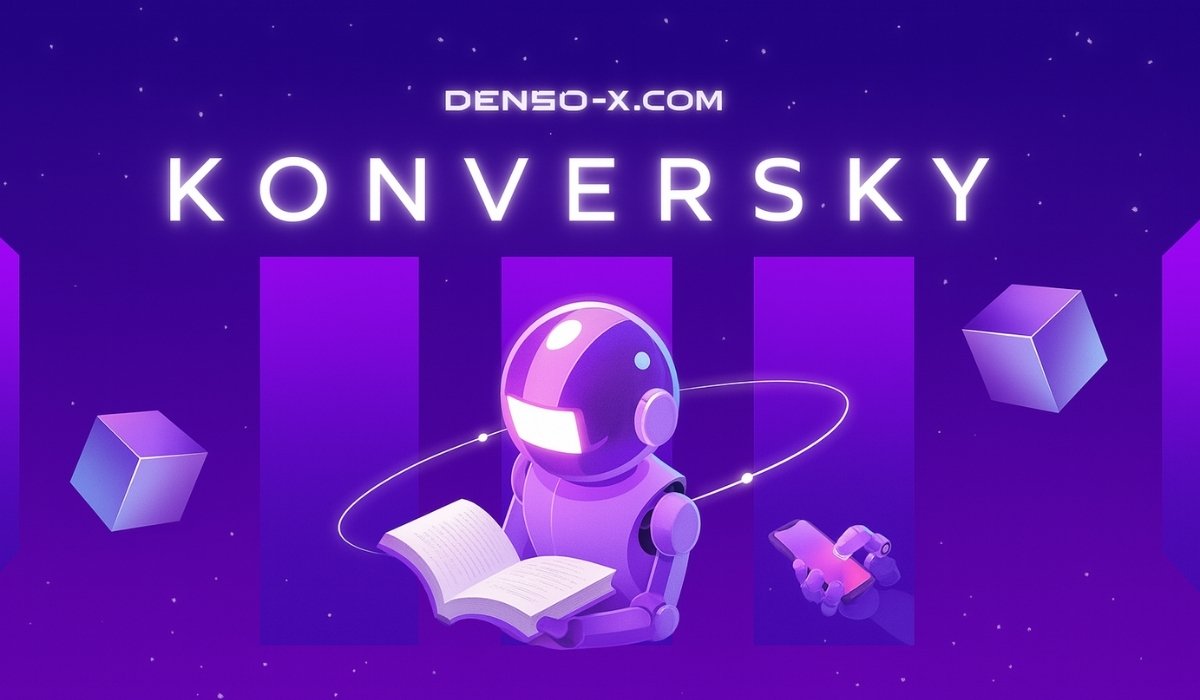In an era where technological evolution shapes nearly every facet of business and life, a new name is emerging at the forefront of digital transformation — Konversky. While still relatively new to the broader public, Konversky is rapidly gaining recognition as a revolutionary framework or concept that integrates automation, artificial intelligence (AI), machine learning (ML), cloud technologies, and user-centric digital strategy to transform how businesses operate and scale. Unlike traditional transformation models that take a siloed approach to innovation, Konversky is about holistic synergy — it bridges operational efficiency with intelligent decision-making. Businesses that adopt Konversky are finding themselves better prepared for the volatile digital economy, empowered by faster insights, automated workflows, and deeply personalized customer experiences.
The Foundation of Konversky: A Convergence of Technologies
At its core, Konversky is not just a singular technology but a convergence of several powerful digital enablers. Think of it as a dynamic ecosystem where AI and ML power data-driven insights, cloud computing provides scalability and agility, automation accelerates repetitive tasks, and analytics drive strategic foresight. This technological integration allows organizations to transition from reactive to predictive modes of operation. offers a blueprint for businesses to eliminate friction between their operational silos, enabling them to deliver seamless experiences both internally and externally. Unlike previous transformation waves, Konversky emphasizes adaptability — encouraging businesses to evolve continuously as customer expectations and market dynamics change.
The Business Impact of Adopting Konversky

The real-world impact of implementing is increasingly evident. Companies that embrace this digital transformation model report improvements in operational efficiency, reduced costs, improved employee satisfaction, and a significant uptick in customer engagement. One of the key benefits lies in the data unification enabled by the model. Rather than drowning in data from disparate systems, organizations can centralize their insights and convert them into actionable intelligence. This leads to smarter marketing campaigns, more accurate demand forecasting, optimized supply chains, and tailored customer interactions. In short, Konversky enables a more intelligent and responsive business model, allowing organizations to innovate while maintaining strategic control.
Why Konversky Is More Than Just Another Tech Trend
While terms like “digital transformation” and “industry 4.0” are often used interchangeably with fleeting buzzwords, stands out due to its practical utility and long-term scalability. It’s not a tool that becomes obsolete after implementation; rather, it’s a framework that evolves alongside the company. Whether you’re a tech startup, a traditional enterprise, or a public-sector organization, Konversky offers the flexibility to scale with your growth and adapt to new digital disruptions. More importantly, it doesn’t require a complete overhaul of legacy systems. Through modular integration, companies can gradually adopt components, reducing resistance to change and increasing return on investment over time.
Konversky and Customer Experience: A New Digital Frontier

One of the most promising aspects of Konversky is how it redefines customer experience (CX). Traditional customer service models relied heavily on human agents and static FAQs. With, businesses can implement intelligent virtual assistants, predictive personalization, and automated support workflows that respond to customer needs in real-time. Furthermore, it enables omnichannel consistency, allowing customers to switch between platforms — from mobile apps to social media — without repeating their information or losing context. This seamless interaction not only improves customer satisfaction but also builds brand loyalty. By leveraging the insights gained through-powered analytics, businesses can anticipate customer behavior and deliver proactive solutions before issues even arise.
The Role of AI and Machine Learning in Konversky
Artificial intelligence and machine learning are fundamental pillars of the approach. These technologies drive automation, facilitate predictive analysis, and enable real-time decision-making. For instance, an eCommerce business using Konversky might utilize ML algorithms to identify high-risk transactions, recommend products based on browsing history, or optimize delivery routes. AI also plays a vital role in natural language processing (NLP), which is crucial for creating conversational interfaces like chatbots and voice assistants. These capabilities allow businesses to not only gather vast amounts of unstructured data but also make sense of it with minimal human intervention. The synergy between AI and Konversky helps create systems that are not only reactive but self-improving.
Konversky in Action: Use Cases Across Industries

The beauty of lies in its versatility. In healthcare, it can automate patient record management, enhance diagnostic accuracy through AI, and streamline appointment scheduling. In manufacturing, it enables smart factories where IoT devices and robotics coordinate autonomously. In the financial sector, aids in fraud detection, customer onboarding, and investment modeling. Retailers use it to create hyper-personalized shopping experiences, and logistics firms deploy it to optimize supply chains in real-time. Government agencies are also beginning to adopt frameworks to digitize public services and increase administrative transparency. This widespread application illustrates how is not just a theoretical model but a tangible force reshaping modern industries.
Challenges in Implementing Konversky — And How to Overcome Them
Despite its potential, implementing isn’t without its challenges. Legacy infrastructure, data silos, and organizational resistance are common hurdles that companies face. Additionally, there’s often a skills gap, with existing staff unfamiliar with the new technologies involved. The solution lies in phased adoption, supported by internal training and change management strategies. Organizations should start by identifying key pain points and implementing solutions in those specific areas. Success in these initial implementations builds trust and momentum for broader adoption. Collaborating with technology partners or digital consultants can also help accelerate the journey and reduce implementation risks. Security and compliance are additional concerns that must be addressed proactively through robust governance models.
The Future of Konversky: What’s Next?

Looking ahead, Konversky is poised to become a central pillar in digital-first business strategies. As technologies like quantum computing, edge AI, and 5G connectivity mature, they will likely integrate seamlessly with the Konversky model to offer even more powerful capabilities. Businesses will move beyond digital transformation to a stage of digital maturity, where constant innovation becomes embedded in the culture. We may also see the rise of-as-a-Service platforms that provide pre-built transformation modules tailored to different industries. These developments will democratize digital capabilities, allowing even small and medium enterprises to compete with larger players. Ultimately, represents not just a transformation method but a mindset shift — one that embraces change, values agility, and leverages technology as a strategic advantage.
Conclusion: Why Konversky Is a Game-Changer for Digital Transformation
In summary, Konversky is more than a passing trend — it is a revolutionary framework for building intelligent, agile, and future-ready organizations. It addresses the limitations of conventional digital transformation strategies by promoting unified ecosystems, leveraging advanced technologies, and focusing on customer-centricity. As businesses face growing pressure to adapt in a volatile market, offers a roadmap for sustainable growth and innovation. Companies that embrace this model are not only preparing themselves for the present but are also setting the foundation for future success. By integrating into their operations, businesses can unlock new efficiencies, serve customers better, and maintain a competitive edge in an increasingly digital world.
Frequently Asked Questions (FAQ)
1. What is Konversky in simple terms?
- Konversky is a comprehensive digital transformation framework that integrates technologies like AI, machine learning, automation, and cloud computing to help businesses become more agile, intelligent, and customer-focused.
2. How is Konversky different from traditional digital transformation?
- Unlike traditional transformation models that often focus on isolated technologies, Konversky takes a holistic approach, emphasizing system integration, real-time analytics, and scalable innovation.
3. Which industries can benefit from Konversky?
- Konversky is applicable across multiple industries, including healthcare, finance, retail, logistics, manufacturing, and even government services.
4. Is Konversky suitable for small businesses?
- Yes, Konversky’s modular structure allows small and medium-sized businesses to adopt digital transformation at their own pace and scale gradually based on their needs and resources.
5. What are the main challenges in implementing Konversky?
- Common challenges include legacy system compatibility, organizational resistance, and the lack of skilled personnel. These can be addressed through phased adoption, internal training, and expert partnerships.









